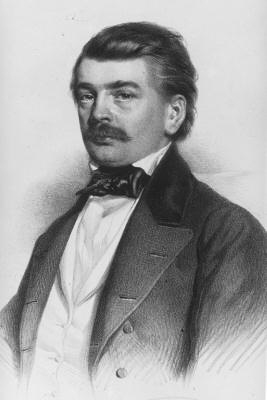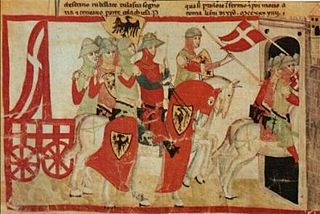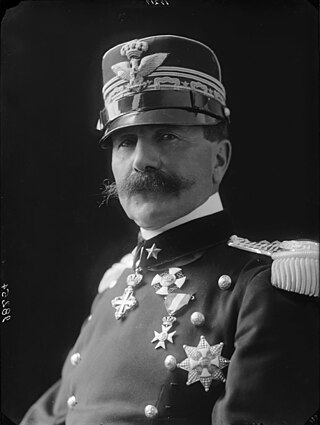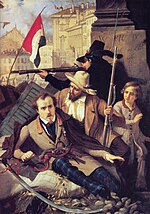Prelude
A narrative on the event of the sortie on mestre, was written by Lieutenant-General Pepe, and published by Henry Colburn in 1850, London: [15]
"On the morning of the 27th, before dawn, the General-in-Chief, surrounded by his staff, from the lunette No. 12 in the fort of Malghera, observed the movement of three columns, which contained in all about 2000 bayonets. That on the left consisted of 450 men of the fifth Venetian legion, commanded by its colonel, D'Amigo, and embarked on a number of boats; it was preceded by five pirogues and two scouts, under the orders of Captain Basilesso of the navy. These boats, with their artillery, were intended to facilitate the landing of our men in Fuseria."
"The Colonel had instructions to occupy that post, and afterwards the part of Boaria which adjoins the city of Mestre, so as to form a reserve for the centre column. This column consisted of 900 men, commanded by Colonel Morandi, and composed of Lombard and Bolognese volunteers; its orders were to dislodge the enemy entrenched on the railroad, and then to occupy Mestre by force. The right column of 650 men, formed of the free Italian battalion, and the chasseurs of the Upper Reno, commanded by Colonel Zambeccari, had orders to take a barricade erected on the narrow banks of the canal of Mestre, and defended by two guns, and by considerable numbers of infantry posted in the neighbouring houses, which were fortified with loopholes."
The sortie
A narrative on the event of the sortie on mestre, was written by Lieutenant-General Pepe, and published by Henry Colburn in 1850, London: [15]
"The strength of the enemy was about 3000 men on the whole line, besides 2000 entrenched in Mestre, which was also defended by many field-pieces, and by chasseurs ready to fire from the houses."
"The centre column was stopped by the fire of the muskets, and by the artillery of the enemy. The General-in-Chief despatched Colonel Ulloa with one hundred gendarmes of the reserve, and with this reinforcement he rallied and urged on the column at the pas de charge; and they penetrated into the city. They were stopped a second time; but in spite of the obstinate resistance they encountered, and the great loss they sustained, they advanced onwards."
"The enemy, after losing part of their artillery, defended themselves from the houses. Captain Sirtori, Major Rosaroll, and Captain Cattabene, bold even to temerity, undertook with a handful of brave Lombards to drive out the Austrian's house by house, and thus opened the way to our troops who occupied the city militarily."
"But what was still better, was to have proved that the Italian volunteers, who only a few months before had taken arms for the first time, commanded by officers for the most part new to the profession, had beaten the Austrians, who were superior in number, well entrenched, obstinately defended, and prepared overnight to receive us, and who made use of the loop-holed houses as a second line of defence."

Franz Miklosich was a Slovene philologist.

The Battle of Cortenuova was fought on 27 November 1237 in the course of the Guelphs and Ghibellines Wars: in it, Holy Roman Emperor Frederick II defeated the Second Lombard League.

Daniele Manin was an Italian patriot, statesman and leader of the Risorgimento in Venice. Many Italian historians consider him to be an important figure in Italian unification.

The Kingdom of Lombardy–Venetia, commonly called the "Lombardo-Venetian Kingdom", was a constituent land of the Austrian Empire from 1815 to 1866. It was created in 1815 by resolution of the Congress of Vienna in recognition of the Austrian House of Habsburg-Lorraine's rights to the former Duchy of Milan and the former Republic of Venice after the Napoleonic Kingdom of Italy, proclaimed in 1805, had collapsed.

The Kingdom of Italy was a kingdom in Northern Italy in personal union with Napoleon I's French Empire. It was fully influenced by revolutionary France and ended with Napoleon's defeat and fall. Its government was assumed by Napoleon as King of Italy and the viceroyalty delegated to his stepson Eugène de Beauharnais. It covered some of Piedmont and the modern regions of Lombardy, Veneto, Emilia-Romagna, Friuli-Venezia Giulia, Trentino, South Tyrol, and Marche. Napoleon I also ruled the rest of northern and central Italy in the form of Nice, Aosta, Piedmont, Liguria, Tuscany, Umbria, and Lazio, but directly as part of the French Empire, rather than as part of a vassal state.

General Sir Robert Thomas Wilson was a British general and politician who served in Flanders, Egypt, the Iberian Peninsula, Prussia, and was seconded to the Imperial Russian Army in 1812. He sat as the Whig Member of Parliament (MP) for Southwark from 1818 to 1831. He served as the Governor of Gibraltar from 1842 until his death in 1849.

The Battle of Varese was fought on 26 May 1859 at Varese (Lombardy). It was an engagement of the Second Italian War of Independence, fought between the Italian volunteers formation of the Hunters of the Alps, led by Giuseppe Garibaldi, against Austrian troops led by Karl von Urban. The Austrian defeat allowed the movement of the Hunters towards Como, and obliged the Austrians to keep troops on the northern part of the front.

The Battle of Curzola was a naval battle fought on 9 September 1298 between the Genoese and Venetian navies. It was a disaster for Venice, a major setback among the many battles fought in the 13th and 14th centuries between Pisa, Genoa, and Venice in a long series of wars for the control of Mediterranean and Levantine trade.

The Ten Days of Brescia was a revolt which broke out in the northern Italian city of that name, which lasted from 23 March to 1 April 1849.

The Skirmish of Pastrengo was fought between the Piedmontese and Austrian army on 30 April 1848, in the course of the First Italian War of Independence.

The Five Days of Milan was an insurrection and a major event in the Revolutionary Year of 1848 that started the First Italian War of Independence. On 18 March, a rebellion arose in the city of Milan which in five days of street fighting drove Marshal Radetzky and his Austrian soldiers from the city.

The Republic of San Marco or the Venetian Republic was an Italian revolutionary state which existed for 17 months in 1848–1849. Based on the Venetian Lagoon, it extended into most of Venetia, or the Terraferma territory of the Republic of Venice, suppressed 51 years earlier in the French Revolutionary Wars. After declaring independence from the Habsburg Austrian Empire, the republic later joined the Kingdom of Sardinia in an attempt, led by the latter, to unite northern Italy against foreign domination. But the First Italian War of Independence ended in the defeat of Sardinia, and Austrian forces reconquered the Republic of San Marco on 28 August 1849 following a long siege.

The Battle of Kassala was fought on July 17, 1894, between an Italian colonial troop and Mahdist Sudanese forces.

György Kmety was a general in the Hungarian Army, and in the Ottoman Army under the name Ismail Pasha.

Giuseppe Rondizzoni was an Italian army officer who contributed to the independence of Chile.
Pierre Jadart Dumerbion or Pierre Jadart du Merbion joined the French army as a junior officer in 1754 and fought in the Seven Years' War. As an experienced officer, he was promoted to colonel in 1792 at the start of the French Revolutionary Wars. He soon became a general officer and found himself commanding the Army of Italy. In April 1794 he won the Battle of Saorgio over the armies of Habsburg Austria and the Kingdom of Sardinia-Piedmont by using a strategic plan drawn up by his newly appointed artillery officer, Napoleon Bonaparte. Though he was the victor, Dumerbion was unable to personally take the field because of his age and poor health. In September 1794, his army again beat the Coalition forces at the First Battle of Dego. He retired in 1795 and died in 1797. DUMERBION is one of the names inscribed under the Arc de Triomphe on Column 23.
The Battle of Motta was fought in late August 1412, when an invading army of Hungarians, Germans and Croats, led by Pippo Spano and Voivode Miklós Marczali attacked the Venetian positions at Motta in Italy and suffered a heavy defeat.

The Second Battle of Agordat was fought in late December 1893, between Italian colonial troops and Mahdists from Sudan. Emir Ahmed Ali campaigned against the Italian forces in eastern Sudan and led about 10,000–12,000 men east from Kassala. This force encountered 2,400 Italians and their Eritrean askaris at Agordat, west of Asmara, commanded by Colonel Arimondi. Over 1,000 Dervishes, including the Emir, were killed in severe fighting. The outcome of the battle constituted "...the first decisive victory yet won by Europeans against the Sudanese revolutionaries,..."
The following is a timeline of the history of the city of Cremona in the Lombardy region of Italy.

Roberto Brusati OSML OCI, was an Italian General of the Army who was an active participant in World War I. He was known for not having any military experience prior to the war and commanding the 1st Army before being dismissed from commanding the regiment on May 8, 1916, which was 8 days before the Battle of Asiago which was led by Field Marshal Franz Conrad von Hötzendorf.


















